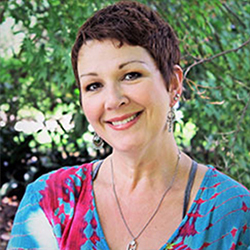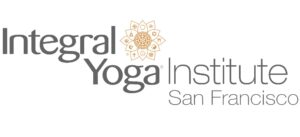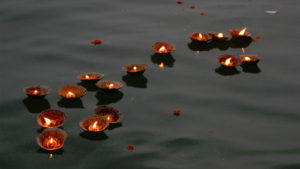by Karla Helbert
Ahimsa, the first of the yamas, is possibly the most important guide of all for self-care. It is often translated as “non-harming, non-violence. Sadly, the human capacity for violence and harm is our greatest failing. Acknowledging our own capacity for violence—toward ourselves and others—is the beginning of change. We may think that violence has nothing to do with grief, but it is actually quite often a part of the experience.
Underlying violence is almost always fear. We are regularly filled with fears, of the unknown, of others, of change. To avoid feeling our own pain, or being in pain, we often cause pain to others as a form of protection. When our security is threatened on any level, our inner capacity for violence is stirred. This may take place internally or as an outward expression, but it is always a form of violence. Any time we experience any amount of hostility or antagonism, inwardly or outwardly, there is violence—even if but a seed.
Any type of loss can bring feelings and experiences of violence and a sense of violation. When people feel powerless or filled with despair, anger can often result. We may want to lash out, to harm, to destroy. We may also direct violence toward ourselves by neglect, or through harmful behaviors that can damage body, mind, and spirit.
We live in a world where anger is often more acceptable than sadness. Anger itself is not the problem. Violence is the problem. Anger is a signal that there is something wrong, and when you experience profound loss, there is something very wrong. Recognize that your feelings are important and valid. Being aware of how you direct the energy of your feelings—especially anger and fear—makes all the difference. Learning to cultivate loving and constructive energies and feelings in the place of violent, destructive ones can be difficult, but it is possible. The practice of ahimsa supports us in this.
Directing compassion toward ourselves is essential in grief, and in managing feelings of anger and fear. Yet, many of us have extreme difficulty with self-care. Sometimes this is because we are so overwhelmed by pain that we simply do not have the energy to act in a caretaking way for ourselves. Other times we may feel emotionally unable to engage in acts of love or care toward ourselves. We may feel undeserving of care or love. We may feel we do not deserve anything other than pain or there can never be anything other than pain in the future. We often do not care about the pain we may cause ourselves—no pain can be greater than the pain of being without who or what we have lost.
Awareness is the beginning of change—and of ahimsa. Can you observe, with as little judgment as possible, any violence that has occurred or may be occurring inside you? Can you peel back the layers of that to see what lies beneath? Is there fear, is there anger? Do you regularly perpetuate thoughts or engage in behaviors that cause harm to your body, mind, psyche, or spirit? The first step to dissolving the root of violence is recognizing that violence has taken root. Is there a seed that may grow? Observe with love and compassion and without judgment any violence inside you and how it is manifesting.
Spend some time thinking, with as much compassion as possible, about ways both large and small that you do harm to yourself. This in itself is a form of self-care. You do not have to force yourself to change your thoughts or actions, but rather attempt to become lovingly aware. Slowly and gently, you can add small ways of caring for yourself. Those small things may turn into greater acts of self-care.
Self-care is physical—taking care of your body with good food, sleep, exercise, massage, movement, sunshine, and nutrition. It is mental—self-help books, music, art, creativity, seeking and finding a well-trained counselor who understands grief and bereavement. It is spiritual—in meditation, nature, study of spiritual books, chant, ritual, prayer, contemplation, speaking to a trusted spiritual leader. Self-care is also found in reaching out to your community—to friends and family, neighbors, co-workers. It is finding and going to a support group, engaging with on-line communities, taking a course or workshop. Each of these things can be done with small steps forward.
Here is a simple, yet profound ahimsa practice you can do right now: Place your hands over your heart, close your eyes if you wish. Breathe slowly and fully, directing your focus toward your heart. Ask yourself, “What is the most compassionate thing I can do for myself right now?” Sit and breathe. Connect with your heart energy and allow the answer to come. When you are ready, open your eyes. Is it possible to do that thing? If so, please do it. If not, make time and space to practice the compassionate thing as soon as possible.
Join me November 7th for a few hours of self-care as we explore how yoga can help you in your heartbreak. Learn ways of practicing ahimsa as you take steps toward tending to your heart with compassion and nonjudgment: Yoga for Grief & Loss
Sun. November 7 @ 12:30 pm – 4:00 pm PST
 Karla Helbert, LPC, C-IAYT, E-RYT 500 is a licensed professional counselor, yoga therapist, award-winning author, and bereaved mother. Her life was forever changed after her son died of a brain tumor in 2006. Karla’s book Yoga for Grief and Loss is endorsed and used as a teaching tool by leaders, teachers and experts in the fields of yoga, grief and loss. Her most recent book The Chakras in Grief and Trauma is the currently the only book focusing on the ways our energetic bodies are impacted by trauma and grief. Karla is also faculty for the Integral Yoga Therapy 800 hour certification teaching Yoga and Psychology. She lives in Richmond Virginia with her husband and daughter. karlahelbert.com
Karla Helbert, LPC, C-IAYT, E-RYT 500 is a licensed professional counselor, yoga therapist, award-winning author, and bereaved mother. Her life was forever changed after her son died of a brain tumor in 2006. Karla’s book Yoga for Grief and Loss is endorsed and used as a teaching tool by leaders, teachers and experts in the fields of yoga, grief and loss. Her most recent book The Chakras in Grief and Trauma is the currently the only book focusing on the ways our energetic bodies are impacted by trauma and grief. Karla is also faculty for the Integral Yoga Therapy 800 hour certification teaching Yoga and Psychology. She lives in Richmond Virginia with her husband and daughter. karlahelbert.com

